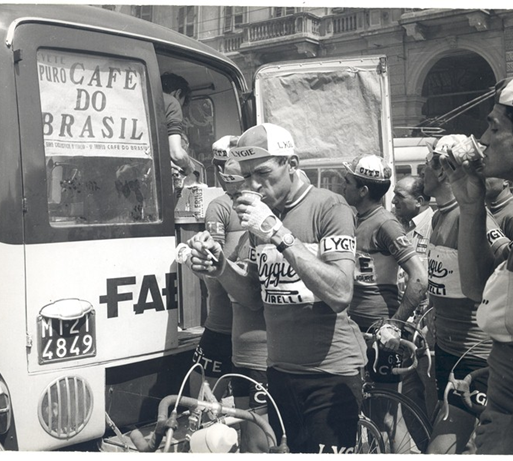
Port Velo was founded on an intrinsic link with cycling and coffee.
This relationship between cycling and coffee is a perfect pairing but also complex, it’s more than just the caffeine. There is also an unusual relationship between cycling and specialty coffee, one that has expanded rapidly in recent years.
Coffee and Cycling | Where did it all begin?
Where did it all start. How does cycling and coffee, this perfect pairing have anything to do with Port Velo?
Lets start with the early days of how coffee and cycling became such a perfect pairing. Some would say that it started in the 1960s and early 70s FAEMA, an Italian espresso machine manufacturer, sponsored the FAEMA cycling team which had on its roster the now famous Eddy Merckx.
Merckx is recognised primarily within the Cycling World as the greatest cyclist of all time. Despite the fact that FAEMA had sponsored cycling teams before, Merckx was clearly the most popular rider a coffee company had ever sponsored.
In 1983 the National Federation of coffee grows of Columbia (FNC) created a cycling team Café de Columbia. It was this team that helped Colombian cyclists Luis Herrera become the 1st South American cyclist to win a Grand Tour in 1987.
Throughout the 20th century, coffee companies such as Saeco, Segafredo and a US coffee house chain, Jittery Joes continued to sponsor cyclists and teams alike. However, it’s been about more than coffee companies sponsoring teams.
Cafes and espresso bars have always offered cyclists that place to meet before a ride. Also a place to briefly socialise and relax during a ride which has also coined the phrase ‘the coffee ride’. This leads to the relationship being rooted in a bond and a sense of community.
Coffee has always been about the social side of life which can be traced back to the early history of coffee and its consumption, over 400 years ago. But cycling has also evolved into a social activity as much as it is about the racing and Cols.
The Early Days
Most people that know me, will know that I have a lifetime career in coffee, whether that is behind a bar in the early days of my career until now, not only as one of the founders of Port Velo but as Head of coffee for a very large international coffee roaster.
I have discovered that there is a lot of synergy between organising bike tours and cycling holidays and sourcing and bringing together many facets of the coffee supply chain to create a finished product that many people enjoy each day.
Sourcing coffee has always been an adventure, Port Velo’s tagline gives a nod to this, “keep on exploring”, this couldn’t be more true not only with coffee but also on the bike.
Bikes have also been part of my life since a very young age. From my dad getting my first bike when I was around 3 or 4, to racing a fixie around grass circuits thinking I was going to be the next winner of the Milk race, then realising I was completely deluded before giving it up for other past-times.
I think you’d also be surprised to know that my earliest memory of drinking coffee was when I was 5! So the seeds were sown….coffee and cycling!
Bikes and Brews
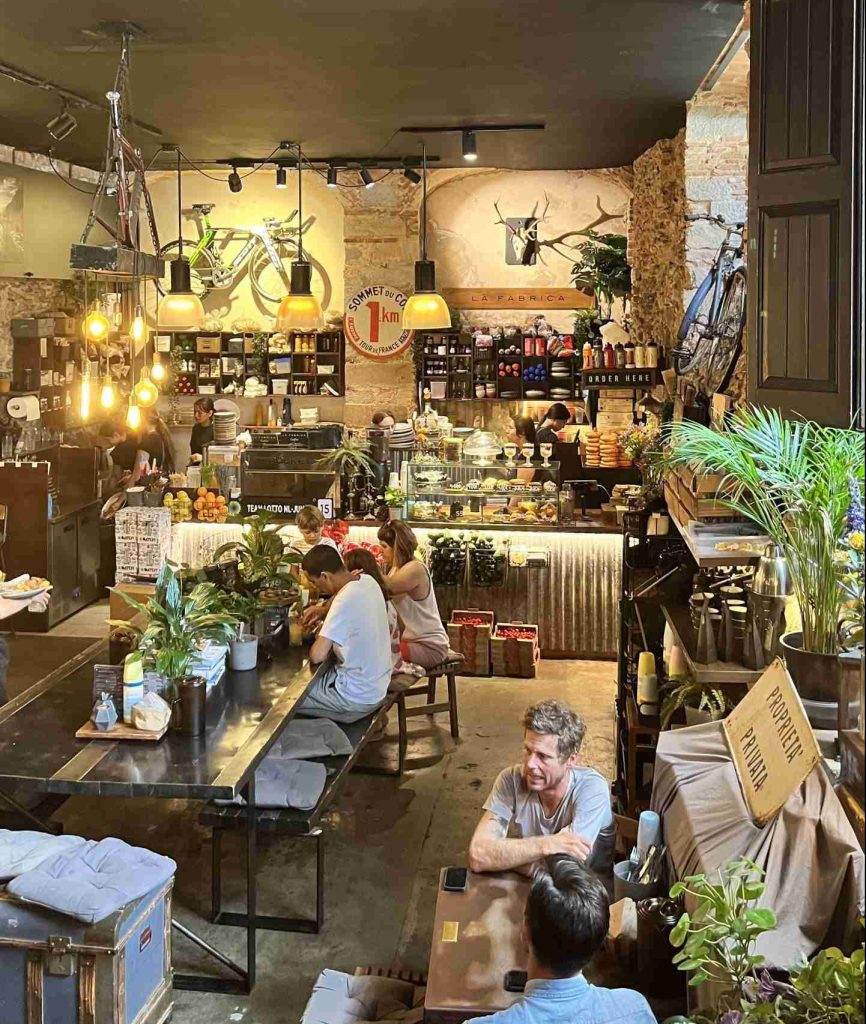
For me there is also the idea that we are drawn to cycling because of the fascination with the exquisite craft of the perfect bike and the equipment and clothing that forms part of the experience. It is this same mindset that attracts me and others to specialty coffee from sourcing coffee, to roasting and finally brewing. It is the same attention to detail hidden within the brands that craft exquisite items of clothing or beautifully made crank sets, or even the very jewel like computers that adorn the carbon cockpits.
Then there is the ritual side of making coffee, however you prepare your brew before the ride, whether it is an espresso, cafetiere or filter coffee, the process is mindful in a way. It is a time to prepare the mind as well as the body. Of course there is the beautifully made espresso machines and brewing equipment, like the AeroPress or v60’s and the grinders, all needing an impossible level of attention to ensure the perfect brew. This to me is a reflection of our attention to detail in cycling or as some would call, the ‘marginal gains’.
Coffee Shaped by the Land
I recall a time when I had to create a signature coffee that fitted a brief for a bike shop that also served coffee, not unusual in itself. However we needed to create a coffee that bridged all of the above elements into a single cup that would sum up the individual parts.
In my mind the coffee itself had to originate from Colombia. This is because the coffee is grown at altitude there and the people that farm it are tough people. The family members can be seen walking up mountains when they are not much older than 12 years old carrying 40kg sacks. This is not because they are forced to work, but the family has a little coffee finca and they see their dad working, they want to help him, therefore copy him.
It is work like this, at altitude, that shapes the Colombian people and in turn the Colombian riders. ‘They are not born in labs – they come from their environment.’ Colombian cyclists are some of the best in the world.
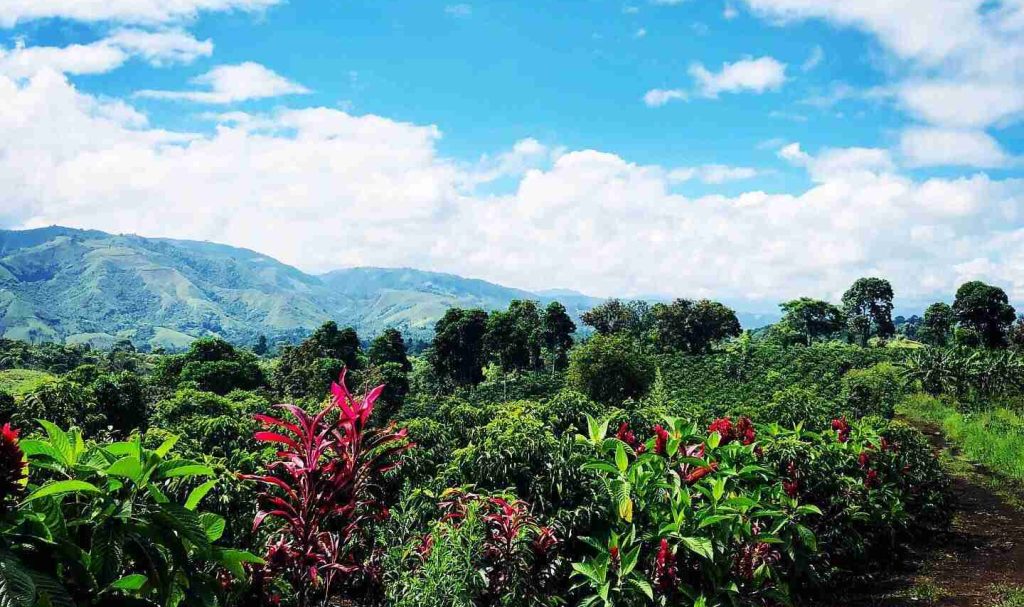
Colombian Cyclists
Luis Herrera was nicknamed el jardinero, ‘the little gardener’, as he farmed flowers, while Nairo Quintana grew up on his parents’ smallholding situated at 3,000m – higher than any French col.
I realised cycling in Colombia, may come first because many people, especially in the countryside, are poor, and the bike is a tool for transport, so everyone has a bike there. This leads to people using them for pleasure, for freedom and sport, not just for transport.
When the Vuelta a Colombia came along [in 1951], it became one of the ways people learned more about Colombia – what the landscape and what the people were like in different parts of the country – because during the races the radio commentators were describing what they were seeing. For all these reasons, cycling is very much in the blood of the Colombian people. It was kept like a secret from the rest of the world until the 1980s and 90s, overshadowed by stories of drug trafficking, and people were terrified to visit. Now they are going and discovering the incredible landscapes and wonderful places, and seeing it as a cycling paradise.
The coffee I selected was because of its lively lemon and orange acidity with caramel and chocolate sweetness reminiscent of the Lombardy regions love of the Dolce (Sweet) espresso, another great place to ride a bike. More importantly for me too was that the coffee was supplied from Racafe, one of Colombia’s leading exporters of specialty coffee, which began life in 1932 with the Espinosa brothers.
Remarkably their first business initiative was renting bicycles – by 1953 the attention turned to coffee, and the company rapidly grew to have milling operations in 9 cities across Colombia. Today it remains a family business, albeit a substantial one.
We then profiled the coffee in the roaster to ensure we kept its intrinsic flavour profile, born from the terroir it is grown, handpicked and processed. The idea being to encapsulate this and evoke the thoughts of Colombia and enjoying the espresso sat at a table outside the bike shop or a café mid-ride, allowing you a moment before embarking on the next cycling adventure.
If you want to learn more about Port Velo and our upcoming cycling tours and holidays, head to our tours page here, Port Velo Tours. If you are interested in riding in Colombia, let us know in the comments below. We are are always expanding our horizons and there is one climb on the bucket list, namely Colombia’s Alto de Letras, the longest climb on Earth.
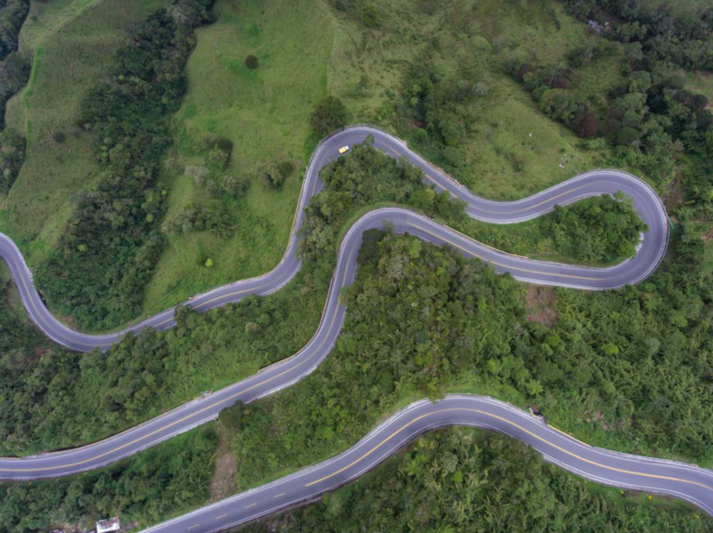
In our next article I will be exploring the benefits of drinking coffee before cycling and the impact of caffeine on cycling performance.
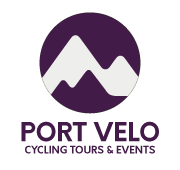
Leave a Reply